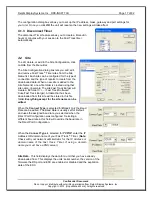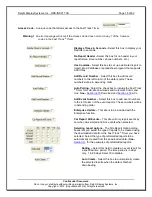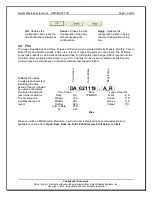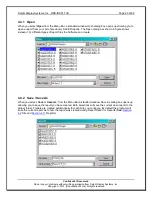
Delphi Display Systems, Inc. RDS-INSFTTCU
Page 5 of 82
Confidential Document:
Do not copy or distribute without written permission from Delphi Display Systems, Inc.
Copyright
2012. [Unpublished Work]. All rights reserved
1
Introduction
The Fast Track
®
3000 Series Timer (herein also referred to as the Timer) helps you operate a drive-thru
store more efficiently and profitably by tracking the progress of customer vehicles through the ordering
and delivery process. Management and staff can use this information in crucial ways to:
Analyze service time
Improve productivity
Set performance goals and incentives
Measure performance
Predict staffing requirements based on past experience
Compare shifts, seasons, and stores
The Fast Track PC Software (the Software) is an application that allows your computer to communicate
with your Fast Track
®
3000 Series Timer (Fast Track
®
Timer). The Software application allows a user to
use a PC as a remote console to operate/program or view the Fast Track
®
Timer or download data for
viewing and analyzing. This manual describes how to install and use the Software application on your
personal computer and to communicate with your Fast Track
®
Timer. The PC Software operates on a
personal computer (PC) using Microsoft Windows 95
®
or higher operating system platform.
The Software requires an interface between the PC and the Fast Track
®
Timer. This interface may be a
cable connecting your PC directly to the RS-232 port of the Fast Track
®
Timer, an Ethernet network
interface card (NIC) using a local area network (LAN) or wide area network (WAN).
The Timer is a measurement instrument that is only as good as the sensors connected to it for vehicle
detection. Listed below are factors to consider when deciding which type of detection to use:
GROUND LOOPS are
strongly recommended
for use in drive-thru applications because:
They detect metal mass ONLY
Troubleshooting is fairly simple.
Sensitivity adjustments are easy.
They are NOT directly exposed to the environment, such as falling rain and snow, leaves blowing
in the wind, pedestrians, animals, etc.
Careless drivers cannot damage them by bumping into them because there is nothing for
careless drivers to bump into.
They usually last many years with trouble-free operation.
SONAR SENSORS are
not recommended
for use in drive-thru applications because:
They detect ANYTHING that passes in front of them, including but not limited to falling rain and
snow, leaves blowing by in the wind, pedestrians, animals, insects, employees hanging their
hands or food containers out the window, etc.
They are usually directly exposed to the environment and any movement in their field of view
activates the output, which effects whatever is connected to the output (drive-thru timers, POS,
order-confirmation systems, etc.
They are usually surface mounted and can be easily broken or misaligned by a collision from
careless drivers.
The initial material and labor costs of installing a sonar sensor are comparable to the initial costs
of installing a ground loop. In the very likely event a sonar sensor must be replaced long before a
ground loop must be replaced, the total cost of the sonar sensor will exceed that of the ground
loop.






































